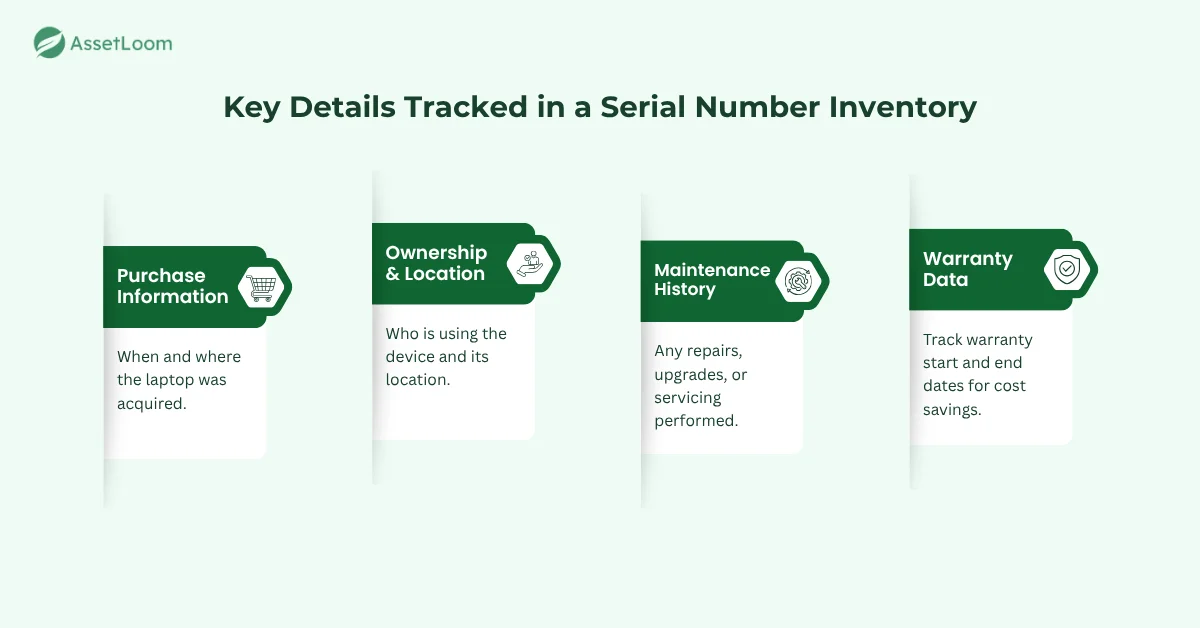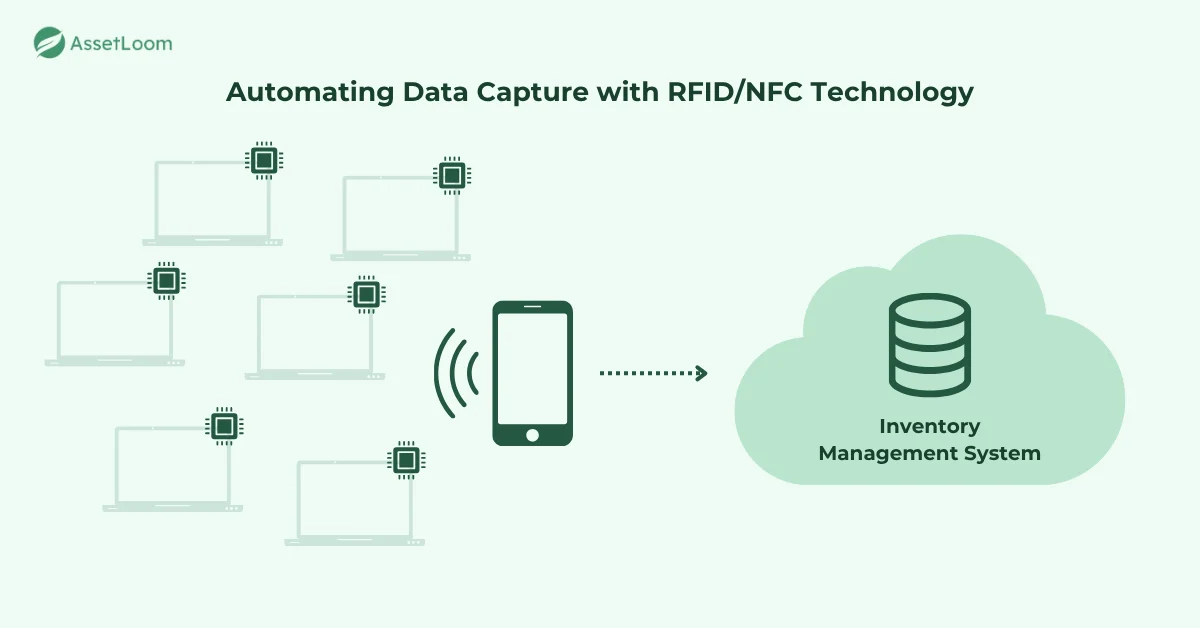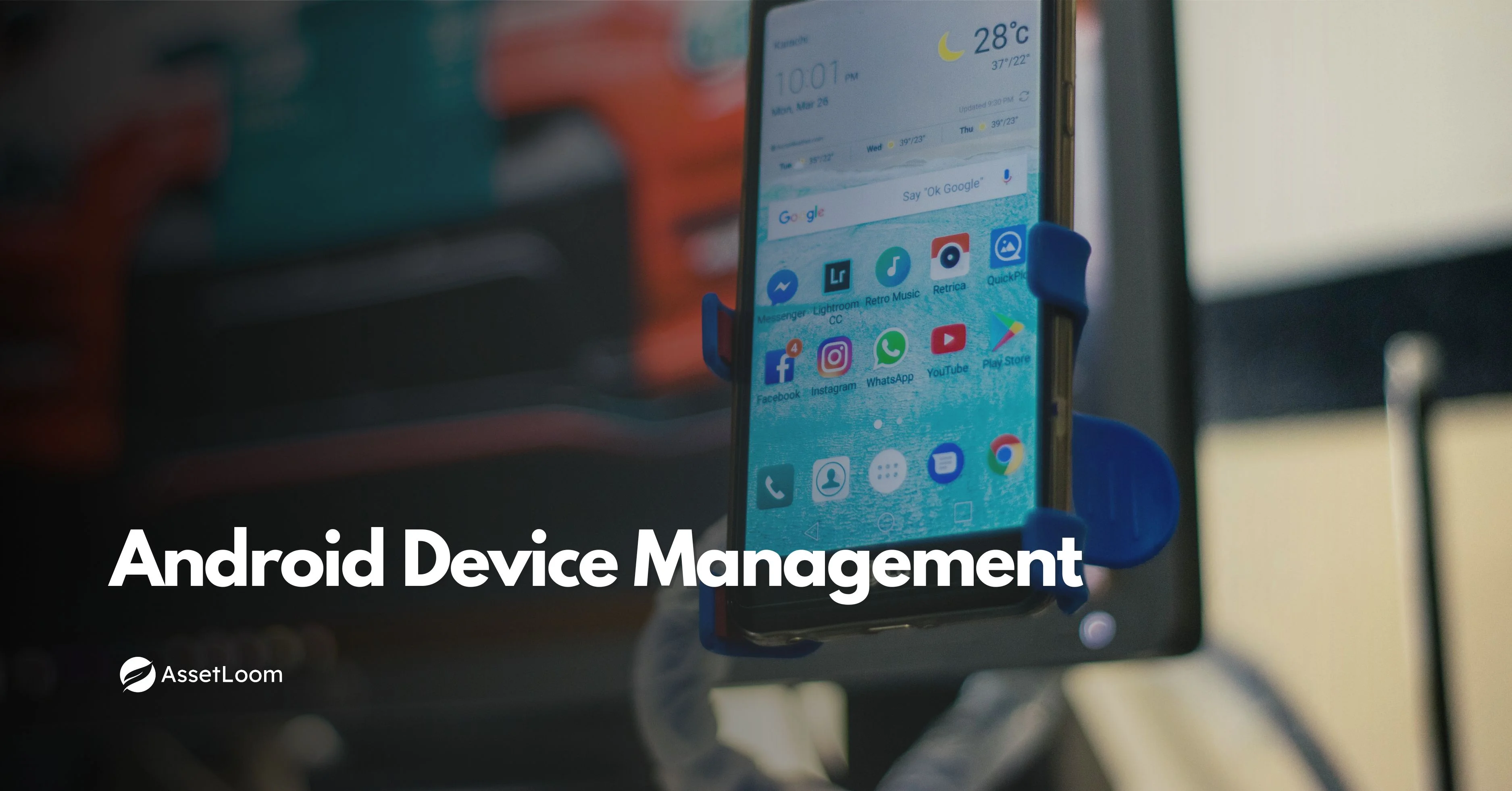Why Every Company Should Maintain a Serial Number Inventory of All Laptops
Learn why maintaining a serial number inventory of all laptops is essential for asset management, security, and efficiency.
Managing company laptops can be a challenge, especially as your business grows. These devices are essential for your employees to stay productive, whether they’re working in the office or remotely. Keeping track of them, however, is often overlooked until an issue arises.
One simple yet highly effective solution is maintaining a serial number inventory for all laptops. This helps you easily track where each laptop is, who’s using it, and when it needs maintenance or replacement. In this blog, we’ll discuss why keeping a serial number inventory of all laptops is an important practice for any business.
What Is a Serial Number Inventory?
A serial number inventory is a system designed to track and manage the unique serial numbers assigned to each laptop within a company. Each laptop comes with a unique serial number from the manufacturer, which acts as a digital fingerprint for the device. This number contains valuable information, such as the model, production year, and manufacturing details, which can help in troubleshooting, warranty claims, and security.
Maintaining a serial number inventory involves recording key details associated with each laptop, such as:
- Purchase Information: When and where the laptop was acquired.
- Ownership and Location: Who is using the device and its current location within the company.
- Maintenance History: Any repairs, upgrades, or servicing that have been performed.
- Warranty Data: Tracking the start and end dates of the laptop’s warranty which can be useful for cost-saving purposes.

This organized system doesn’t just help businesses keep track of laptops; it also ensures proper management of each device throughout its entire hardware lifecycle, from acquisition to disposal. By keeping an up-to-date inventory, companies can streamline asset management, minimize the risk of lost or stolen devices, and optimize their use and maintenance.
Benefits of Maintaining a Serial Number Inventory for Laptops
Maintaining a serial number inventory goes beyond just tracking laptops; it provides key advantages that can significantly benefit businesses. Here’s how it adds value to organizations:
Better Asset Management
By keeping an organized serial number inventory, businesses can manage their laptops more effectively. You’ll have a clear record of every laptop’s location, status, and assigned user. This enables you to avoid issues like over-purchasing new laptops when you already have enough, or failing to recognize when devices are underutilized.
The result is a more streamlined and cost-effective management process, ensuring that devices are allocated where they are needed most.
Enhanced Security and Theft Prevention
Laptops are valuable, and without proper tracking, they can be easy targets for theft. A serial number inventory strengthens security by providing a record of each device’s unique identifier, which can be crucial if a laptop is lost or stolen.
In the event of theft, the serial number can help authorities track and recover the device more easily. Additionally, if the device is recovered, your business will have proof of ownership, which can be important for insurance claims or legal purposes.
Streamlined Maintenance and Warranty Claims
Every laptop comes with a warranty, but without a serial number inventory, tracking warranty periods and service histories can be a nightmare. A serial number inventory helps businesses monitor warranty start and end dates, as well as track any repairs or upgrades made to the device.
This allows companies to make the most of their warranties, avoiding out-of-pocket repair costs for issues covered under the manufacturer’s warranty. It also helps identify devices that may need preventive maintenance or upgrades to extend their lifespan.
Improved Compliance and Simplified Audits
For businesses in regulated industries, compliance with asset tracking regulations is essential. A serial number inventory ensures that every laptop is accounted for and that you have the necessary documentation to meet compliance standards.
Additionally, it simplifies auditing processes. When your company undergoes an audit, having a detailed and up-to-date serial number inventory makes it much easier to provide proof of asset ownership, device condition, and service history, helping you avoid penalties or fines for non-compliance.
Increased Operational Efficiency
An up-to-date serial number inventory improves overall operational efficiency. When laptops are properly tracked, IT departments can quickly identify issues with specific devices and take immediate action.
Whether it’s troubleshooting, software updates, or hardware repairs, knowing exactly what device is in use allows IT teams to provide quicker and more targeted support. This minimizes downtime and ensures that employees can stay productive, which ultimately contributes to smoother operations across the organization.
Cost Savings and Long-Term Planning
Maintaining a serial number inventory also contributes to long-term cost savings. By tracking each laptop’s condition and usage history, businesses can determine when it’s time to retire or replace a device before it becomes costly to maintain.
It also helps with budgeting for future purchases, as you'll have a clearer understanding of the lifespan of your devices and when replacements are necessary. This proactive approach to asset management can save money and reduce the risk of unexpected expenses.
Risk of Not Having a Serial Number Inventory
While maintaining a serial number inventory brings clear benefits, the risks associated with not having one can significantly impact a business. Without an organized system to track laptops, several issues can arise, potentially costing time, money, and resources. Here are the key risks:
- Loss of Devices: Without a serial number inventory, tracking devices becomes difficult. If laptops are lost or misplaced, there’s no way to quickly recover or locate them, leading to unnecessary costs for replacements and potential delays in work.
- Security Concerns: Laptops are valuable and portable, making them easy targets for theft. Without an inventory system, it becomes much harder to track stolen devices. This increases the risk of sensitive company data being exposed or misused.
- Non-compliance with Regulations: Many industries have regulatory requirements for asset management, including the tracking of electronic devices. Failing to maintain a serial number inventory could result in non-compliance, leading to fines, penalties, or legal issues.
- High Costs: When laptops aren’t properly tracked, companies may over-purchase devices because they believe they are missing or unaccounted for. Additionally, without an inventory, you might miss out on warranty claims or fail to properly maintain your devices, resulting in additional costs.
These risks highlight why maintaining a serial number inventory is crucial and how it can protect your company from potential losses and complications.
Advanced Practices for Maintaining a Serial Number Inventory
While traditional inventory management tips like labeling and regular updates are essential, there are a few advanced practices that can significantly streamline your serial number tracking system. These strategies go beyond the basics and focus on optimization, automation, and ensuring long-term scalability.
1. Automate the Data Capture Process with RFID or NFC Technology
Instead of manually entering serial numbers, use RFID tags or NFC (Near Field Communication) technology. These tags can be attached to each laptop, and with a simple tap or scan, the device's information can automatically populate in your inventory management system. This reduces human error, speeds up the process, and allows for real-time tracking of your laptops.
Action Step: Invest in RFID or NFC tags for all laptops. Train your team to use RFID readers or NFC-enabled smartphones for quick updates. This can be especially helpful in large organizations with hundreds of devices to track.

2. Implement Geo-Tagging for Asset Location Tracking
For organizations that need to track laptops in various locations or on the go, implementing geo-tagging can provide another layer of control. By using GPS tracking in your asset management software, you can monitor where each laptop is being used and ensure it's within an authorized area. This is especially useful for remote teams or those with a hybrid work model.
Action Step: Choose asset management software that offers geo-tagging functionality. Make it a policy to activate location tracking for all mobile devices. This adds an extra level of security and helps monitor device usage, particularly for remote employees.
3. Integrate Serial Number Inventory with Other Business Systems
Integrating your serial number inventory system with other business management systems, such as HR or IT service management tools, can help you automate workflows. For example, syncing inventory with employee onboarding systems can automatically assign laptops to new employees, while integration with your IT support system can trigger automatic service requests when a laptop reaches a certain age or service milestone.
Action Step: Work with your IT or HR department to integrate your inventory system with other business software (like HR software for employee assignments or ticketing systems for maintenance). This ensures smooth automation and reduces manual updates.
4. Use Predictive Analytics to Manage Lifecycle and Replacement
Advanced asset management systems now offer predictive analytics that can help you forecast when laptops are nearing the end of their lifecycle. By analyzing historical data on usage, repairs, and performance, you can predict when a laptop might fail or need replacement, enabling you to schedule replacements before issues arise. This can prevent downtime and ensure you’re not caught off-guard.
Action Step: Choose an asset management system with predictive analytics features. Set up alerts that notify you when devices are approaching their expected end-of-life, so you can proactively replace them and avoid unnecessary downtime.
5. Leverage Blockchain for Increased Transparency and Security
For businesses dealing with highly sensitive data or a large number of assets, blockchain technology offers a way to enhance both the transparency and security of your serial number inventory. Blockchain’s decentralized and tamper-proof nature ensures that once a laptop’s data (serial number, owner, service records) is recorded, it cannot be altered without being detected. This can be especially useful for businesses that need to comply with strict regulations.
Action Step: Explore blockchain solutions that offer asset tracking. While this technology is still emerging, early adoption in sectors like healthcare and finance could provide a competitive edge, especially for ensuring the integrity of your asset management data.
6. Utilize Mobile Apps and Cloud Platforms for Real-Time Updates
Moving away from traditional desk setups, cloud-based platforms, and mobile apps allow for real-time updates to your inventory, no matter where your employees are. Laptops can be checked in and out of your system with a simple scan or manual entry via a smartphone app, which means IT staff can update records while in the field, making the process more fluid and less time-consuming.
Action Step: Switch to a cloud-based asset management platform that has mobile app support. This enables IT staff to quickly update the inventory from anywhere and allows employees to access and report issues in real time.
By implementing these advanced practices, you can take your serial number inventory management to the next level, reducing manual processes and improving both security and efficiency. These strategies aren’t just about keeping track of assets. They’re about using innovative technology to make your entire asset management process more proactive, scalable, and data-driven.
Understanding Tools for Managing Serial Number Inventories
To effectively manage a serial number inventory, businesses need the right tools to make tracking simple and accurate. One of the most popular tools is IT asset management software. This software helps keep all your laptop details, like serial numbers, purchase dates, and service history, in one place. It makes updating, tracking, and reporting easy, so your records stay accurate and up-to-date.
Another helpful tool is barcode or QR code scanning. By attaching a unique barcode or QR code to each laptop, employees can quickly scan the code to update the inventory system. This makes the process faster and less prone to errors, especially in companies with lots of laptops to manage.
Cloud-based inventory systems are also becoming a go-to solution. These platforms allow businesses to access and update inventory data from anywhere, ensuring everything is kept current. Plus, cloud systems automatically back up data, so it’s always safe and easy to recover if needed.
For even greater efficiency, consider integrating your inventory system with other business tools, like HR or IT management software. For example, when a laptop is assigned to an employee, the inventory automatically updates, or if maintenance is due, a request can be triggered right away. This integration helps eliminate extra steps and makes everything flow smoothly.
Using the right tools makes serial number inventory management easier, faster, and more reliable, helping businesses save time, reduce mistakes, and keep everything organized.
Conclusion
Maintaining a serial number inventory for all laptops is vital for efficient asset management. By tracking key details like purchase history, ownership, and maintenance, businesses can stay organized and ensure they’re using their resources effectively. This practice also improves security by helping companies track where each device is and who is using it.
An up-to-date inventory also helps save money by preventing unnecessary purchases and ensuring devices are serviced under warranty. In the long run, keeping a serial number inventory is a smart, cost-effective strategy that enhances security, reduces risks, and streamlines operations.

Related Blogs
Subscribe for Expert Tips and Updates
Receive the latest news from AssetLoom. right in your inbox

